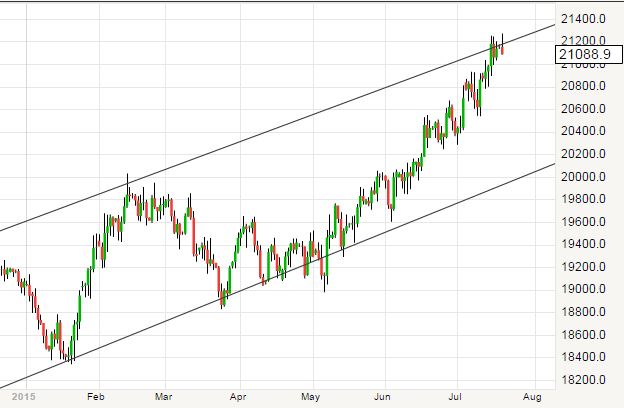Outlook for Australian Dollar Soft as RBA Offers No Support and Gold Prices Melt
The Australian dollar exchange rate complex (AUD) has been undermined by a fresh commodity prices slump and an unsupportive Reserve Bank of Australia.
The Aussie dollar has suffered a confidence knock as gold prices were 4% lower owing to a Chinese sell-off indicating further weakness in the global commodity sector - a central area of support the Australian currency has tended to rely on.
Meanwhile, Tuesday's RBA minutes were unable to provide a game-changer with decision makers continuing to hope that China will reduce volatility and put in policy measures that stabilise the economy and have a knock-on effect.
The latest developments keep alive the 2015 trend for pound sterling - the UK pound has made strong gains against the Australian dollar this year with the GBPAUD pair commencing the year at 1.9021. The pound to Australian dollar exchange rate is now seen trading at 2.1141 – at the top side of its upward-facing channel (see below).
High street banks are seen offering an exchange rate around 2.0549 while independents are quoted closer to the market at 2.0887.
From a technical perspective the outlook remains positive with the RSI (Relative Strength Index) reading at 66 – a level that advocates for further gains.
The Momentum indicator is meanwhile in positive territory at 245 and needs to fall below zero before we call a turn in direction for this exchange rate pair.
Above: The trend higher appears to be well established, but we are at the top of the range and declines to a more sustainable middle ground around 2.08 should not be ruled out.
Commodity Prices Bode ill for the AUD Outlook
The Australian dollar is widely regarded as the leading ‘commodity currency’ owing to a great deal of its valuation being derived from the exports of Australian mining produce.
The fall in commodity prices is therefore important to the direction of the AUD and news that gold prices have dropped as much as 4% to reach $1,086.18 per ounce should ring alarm bells.
Gold has reached its lowest level since November 2010, as China reported that it holds 1,658 metric tons of gold, which is much less than expected. Gold is now consolidating above $1,100.
“The Australian dollar, which is very sensitive to commodity prices, dropped 0.48% against the greenback before stabilising around 0.7360 as gold miners got slammed from the drop in prices with Evolution Mining down 14%, Newcrest Mining down 10% and Northern Star Resources down 9.60%,” notes Arnaud Masset, Market Strategist, Swissquote Bank.
The fall in commodity prices – a symptom of softer Chinese confidence – is a key concern to the Reserve Bank of Australia which has cut interest rates to fight a slowdown in the mining sector.
Lower interest rates invariably result in a lower exchange rate and the outlook for the Aussie dollar will depend on whether the central bank seeks out further rate cuts.
Be aware that on Tuesday we get an update from the RBA in the form of the release of the minutes from the July interest rate decision meeting.
“The minutes of the July meeting due on Tuesday and RBA Governor Stevens’ speech on Wednesday are likely to provide further confirmation that the Bank continues to hold an easing bias,” says a note from ANZ Research at the start of the new week.
Inflation Data Won’t Stand in the Way of Further Rate Cuts
Inflation data is due on Wednesday and any soft figure could prompt a knee-jerk reaction lower in the AUD.
Underlying inflation is expected to have been modest at 0.5% q/q and 2.2% y/y.
“With the economy running at a below-trend pace and wages growth subdued, inflation is likely to remain comfortably within the RBA’s 2-3% target band. Inflation is therefore neither a constraint on further monetary easing, nor a threat to the current easy monetary policy stance,” warn ANZ Research.
Consumer Confidence is Poor
The RBA will be concerned by continued signs that the non-mining component of the Australian economy is struggling to gain traction.
The fragility of consumer confidence has again been laid bare over the past two weeks.
The ANZ-Roy Morgan consumer confidence measure fell sharply amid the negative news surrounding Greece and China’s equity market rout.
The positive reaction to the Commonwealth Budget has now been completely unwound. Consumers’ confidence about ‘economic conditions in the next five years’ fell to the lowest level since the series began in 2008.
In this environment we see little fundamental reason to bet against the present trend lower in the Australian dollar exchange rate complex.





